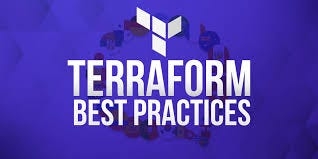Top 10 Common DevOps/SRE Interview Questions and Answers on Terraform Best Practices

How Can You Manage Terraform State Efficiently?
Use remote backends, such as S3 or GCS, to store the Terraform state file. This enables collaboration and ensures state consistency when working in teams. Lock the state using DynamoDB or GCS to prevent simultaneous state modifications.
Example:
backend "s3" {
bucket = "my-terraform-state"
key = "path/to/my/key"
region = "us-west-2"
dynamodb_table = "terraform-lock"
}2. Why Should You Use Version Control with Terraform?
Version control helps track changes to your Terraform configurations, allowing you to roll back to previous versions if necessary. Use Git repositories to manage your .tf files and follow a branch strategy to handle updates.
Example:
Use
gitfor tracking infrastructure changes
git commit -m "Updated production environment"3. How Can You Modularize Terraform Configurations?
Breaking Terraform configurations into reusable modules ensures better code organization, reduces duplication, and simplifies updates.
Example:
module "vpc" {
source = "./modules/vpc"
cidr_block = "10.0.0.0/16"
}4. What Are the Best Practices for Handling Sensitive Data in Terraform?
Avoid hardcoding secrets in Terraform code. Use environment variables or secret management tools like AWS Secrets Manager or HashiCorp Vault to securely handle sensitive information.
Example:
export AWS_ACCESS_KEY_ID=<your_access_key>
export AWS_SECRET_ACCESS_KEY=<your_secret_key>5. How Can You Structure Your Terraform Code for Different Environments?
Separate environments (e.g., dev, staging, production) by using different directories, workspaces, or variables. This keeps configurations for each environment isolated and prevents unintended changes.
Example:
terraform workspace new dev6. Why Should You Use terraform fmt and terraform validate?
Use terraform fmt to ensure consistent formatting of your Terraform code and terraform validate to catch syntax errors before applying changes.
Example:
terraform fmt
terraform validate7. What Are the Best Practices for Writing Output Values in Terraform?
Use output values to expose information from your modules or state. Avoid outputting sensitive information like secrets. Ensure that outputs are relevant and meaningful for debugging or downstream usage.
Example:
output "vpc_id" {
value = module.vpc.vpc_id
}8. How Do You Perform Drift Detection in Terraform?
Drift occurs when the actual infrastructure differs from what is defined in the Terraform state. Use terraform plan regularly to detect and manage drift, ensuring infrastructure remains as intended.
Example:
terraform plan9. Why Should You Use Provider Version Pinning?
Always pin provider versions to prevent unexpected changes when a provider is updated. This ensures stability across different environments and team members.
Example:
provider "aws" {
version = "~> 4.0"
}10. What Are the Best Practices for Terraform Workspaces?
Use workspaces to manage multiple environments (e.g., dev, staging, production) within the same Terraform configuration. However, workspaces are best suited for minor environment differences, not for entirely separate infrastructure.
Example:
terraform workspace select productionConclusion
Adhering to Terraform best practices helps maintain a consistent, scalable, and secure infrastructure. By organizing your code with modules, managing state remotely, handling sensitive data securely, and keeping your environments isolated, you can ensure smooth and reliable Terraform operations. As you continue refining your Terraform expertise, these best practices will be invaluable for both interviews and real-world applications.
Thank you for reading! 🙏 If this article helped you, stay connected with me on social media for more DevOps and SRE insights!
YouTube: Techwithpatil
LinkedIn: Tech with Patil
Instagram: techwithpatil
Feel free to connect, and let’s continue the conversation!😊
🚀 Struggling with Kubernetes Concepts? We’ve Got You Covered!
This course simplifies everything with: ✅ Real-world examples to connect theory with practice. 🛠️ Hands-on labs to build confidence through action. 📚 Clear explanations that make even complex topics easy to understand.
👉 You won’t find a better way to master Kubernetes! Enroll Now https://cloudops0.gumroad.com/l/k8s and take the first step toward becoming a Kubernetes pro! 🌟
TerraformAWSAzureDevOpsSite Reliability Engineer
![]() Written by techwithpatil150 Followers·260 Following
Written by techwithpatil150 Followers·260 Following
DevOps | SRE | Carrers | Cloud | AI | Software Automation https://techwithpatil.com
Last updated